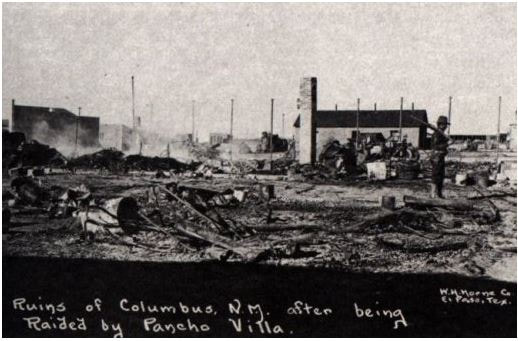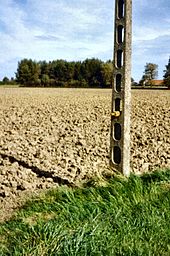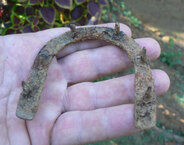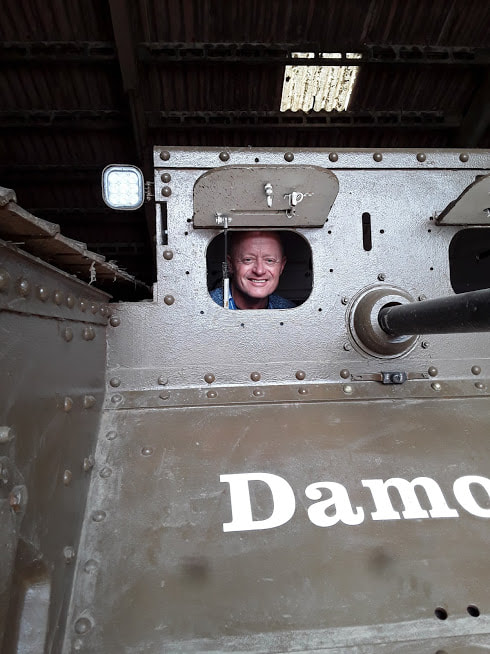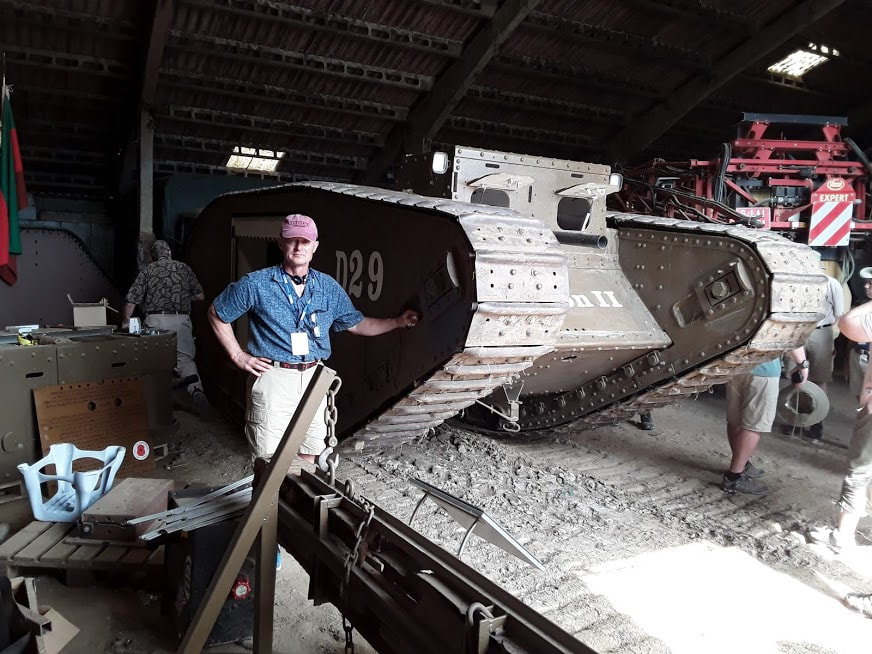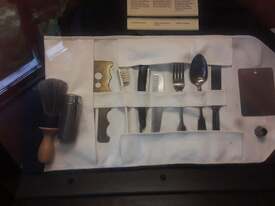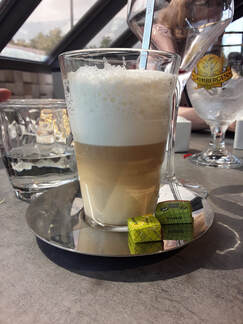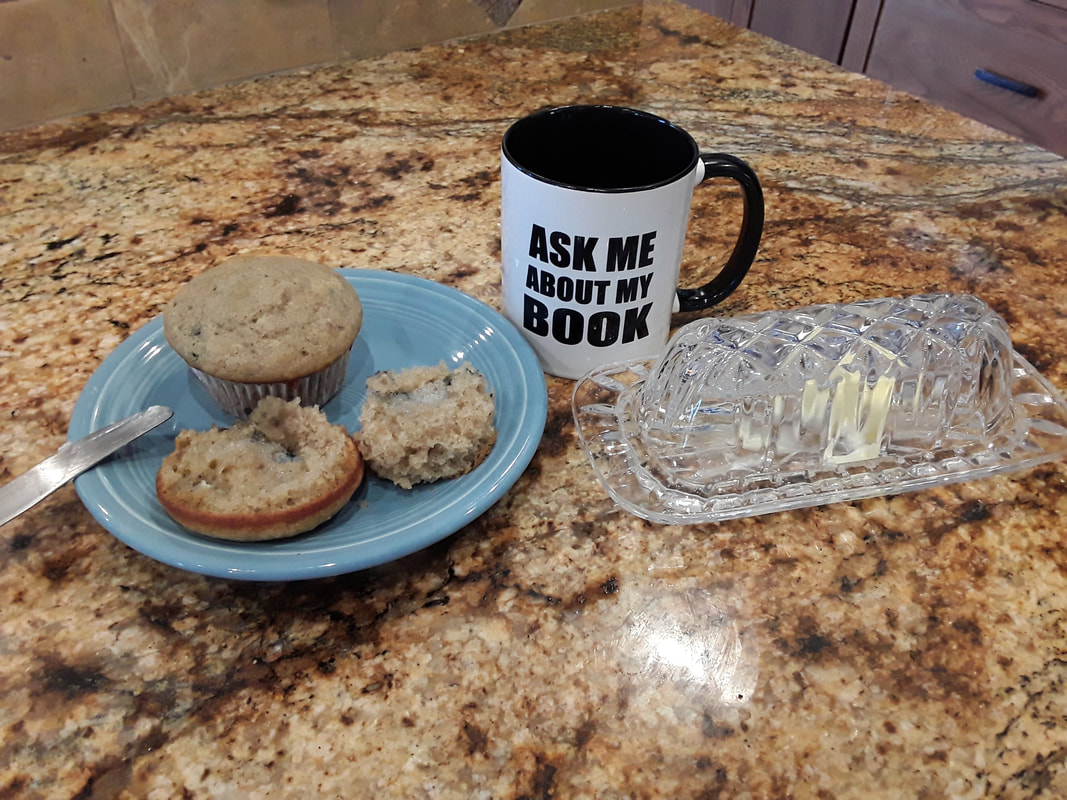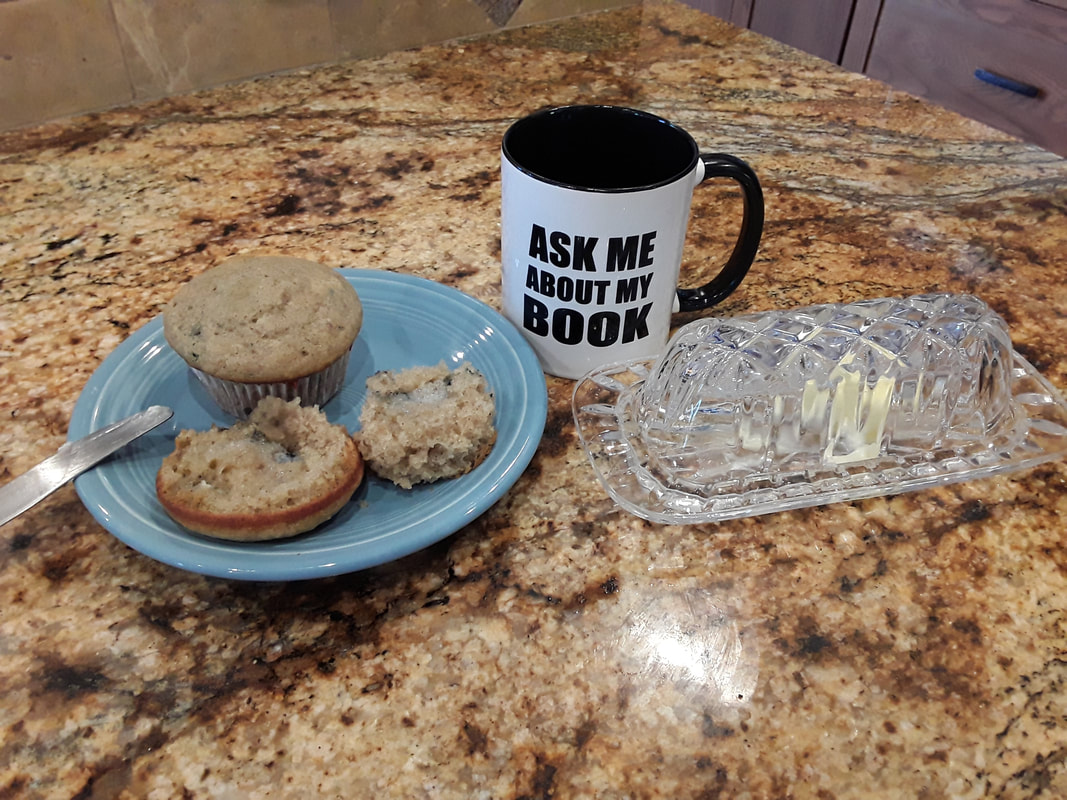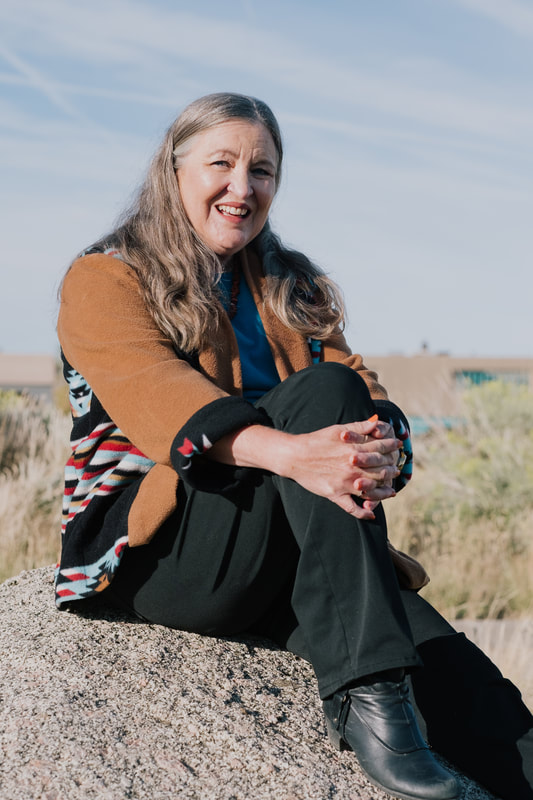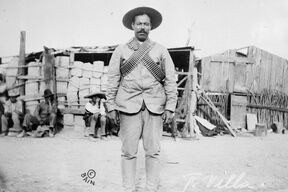 Pancho Villa
Pancho Villa 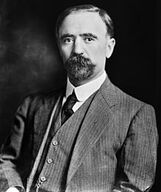 Francisco I. Madero
Francisco I. Madero 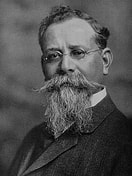 Venustiano Carranza
Venustiano Carranza
Not all of the revolutionaries supported Carranza. One of the leaders in opposition was Pancho Villa, the commander of the northern division of the army centered in Chihuahua. Villa had received a lot of support from Americans in the past and was shocked when this support dried up. Lacking military supplies, money, and munitions, Villa’s army degenerated into a disorganized mob that wandered around northern Mexico, foraging, raping, and looting as they went. On March 9, 1916, his troops crossed the border ant attacked the tiny town of Columbus, New Mexico.
Historians still argue about why Villa crossed the border. One theory is that he wanted to punish the United States for withdrawing its support for his cause. Another is that merchants in Columbus had cheated him in an arms deal. Finally, Villa might have been desperate for the arms and horses he though he could get from the raid.
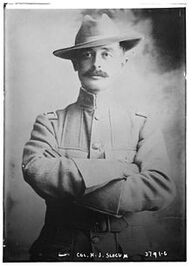
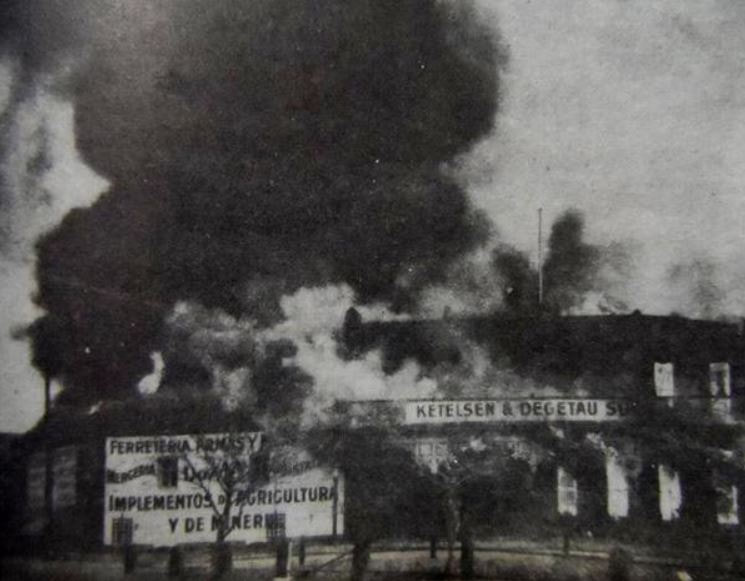 Columbus burning during the raid
Columbus burning during the raid Columbus was a small town, with only a few adobe houses, a couple of hotels, a grocery store, a drug store, a few mercantile businesses and a railway station lining its sandy streets. People in both the town and garrison awoke in the dark to shouts of "Viva Villa!” and “Viva Mexico!" Villa’s army looted the stores and set them on fire. If their proprietors got in the way, they were shot. J.J. Moore, who owned a mercantile shop, was. So was C.C. Miller, the town’s druggist. The fire spread to the Commercial Hotel, where the Villistas robbed people as they fled the burning buildings. Four civilians were killed there, six elsewhere.
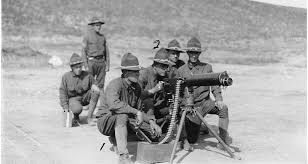
At first the night was so dark that the soldiers couldn’t see their enemies. The only way to locate Villistas were the muzzle flashes as they fired. As the Commercial’s blaze grew, it backlit the Villistas, making them easy targets. Close to 20,000 rounds were fired from the machine guns during the 90-minute fight.
